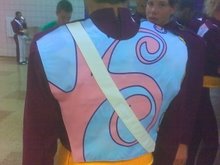Competition in the Marching Activity..Blessing or Curse?
Recently I have been thinking about the competition aspect of the marching activity and trying to draw on some of my ideas and experience to meditate upon whether this improves the activity or hurts it.
The first thing I recognized is that the worlds of Drum Corps and high school marching bands are two very different entities and competition could play very different roles in each community. For Drum Corps, competition is at the very heart of the activity, and has been for years. Corps, from their inception, were groups that competed on a field or in parades with other corps from around the area. High School marching bands grew in support of athletic teams at the school and mostly did not compete until recently. Given these two different histories it would be improper to generalize for the entire marching activity on the merits of competition. This is why I have broken up the discussion into two separate parts; Marching Band, and Drum Corps.
The second thing I recognized is that there should be some standard or definition to what it means to "improve" or "hurt" the activity. I brainstormed several factors that could be used to judge the effect of competition on the marching activity - attendance figures/number of fans, mainstream visibility, complexity of material, education value, number and size of marching units, and general attitude towards the activity. While some of these are vague and can only really be supported by observational and anecdotal evidence, I believe that they are still important to consider in the big picture.
The next step, is sorting out and recognizing that some of these factors may not be influenced or influenced entirely by competition. Mainstream Visibility is an example of a standard that could have causal factors other than competition. I hope to try and point out when a standard could be affected by something outside of competition as I go through them.
let me do a quick explanation of each standard, just to clarify -
Attendance/Fans - This standard answers the question "Is the activity loosing or gaining fans and why?" things such as attendance trends and activity magazines and website popularity can help in determining who the fans are and why they are interested.
Mainstream Visibility - this can include references to the activity in mainstream culture. Maybe the activity figures into a TV show or movie, or a group could be covered by a news outlet.
Complexity of Material - This standard answers the question of "Have shows improved over the years, and how have they improved over the years?" Now I recognize that there are different standards to evaluate these questions as well and I will factor these into the analysis.
Education Value - These groups teach something to their participants. What is the value of what they teach and does competition affect the instruction the participants receive?
Number and Size of Marching Units - Are there more or less groups these days than there were in the past? What caused a change in this number? Are the groups today larger or smaller than their predecessors? Is there as much interest in membership for these groups?
General Attitude - This is a little harder to get a fix on. How do fans/the public feel about the activity in general? How do the directors and participants feel about the activity in general?
Using these, I will analyze the activity and make an informed recommendation as to the effects of Competition on the marching activity.
I will start with examining Drum Corps in the next p0st...





1 comment:
An interesting article here Joe. I look forward to reading your future articles on this topic as the interplay between competition and education in performing ensembles like the marching band is a hot button issue in many school districts. I have posted links to this article on my Squidoo DCI page, and will also forward it out to my Music Education Magic newsletter subscribers in the next issue. Keep up the good work and I can't wait to hear your conclusions.
Post a Comment